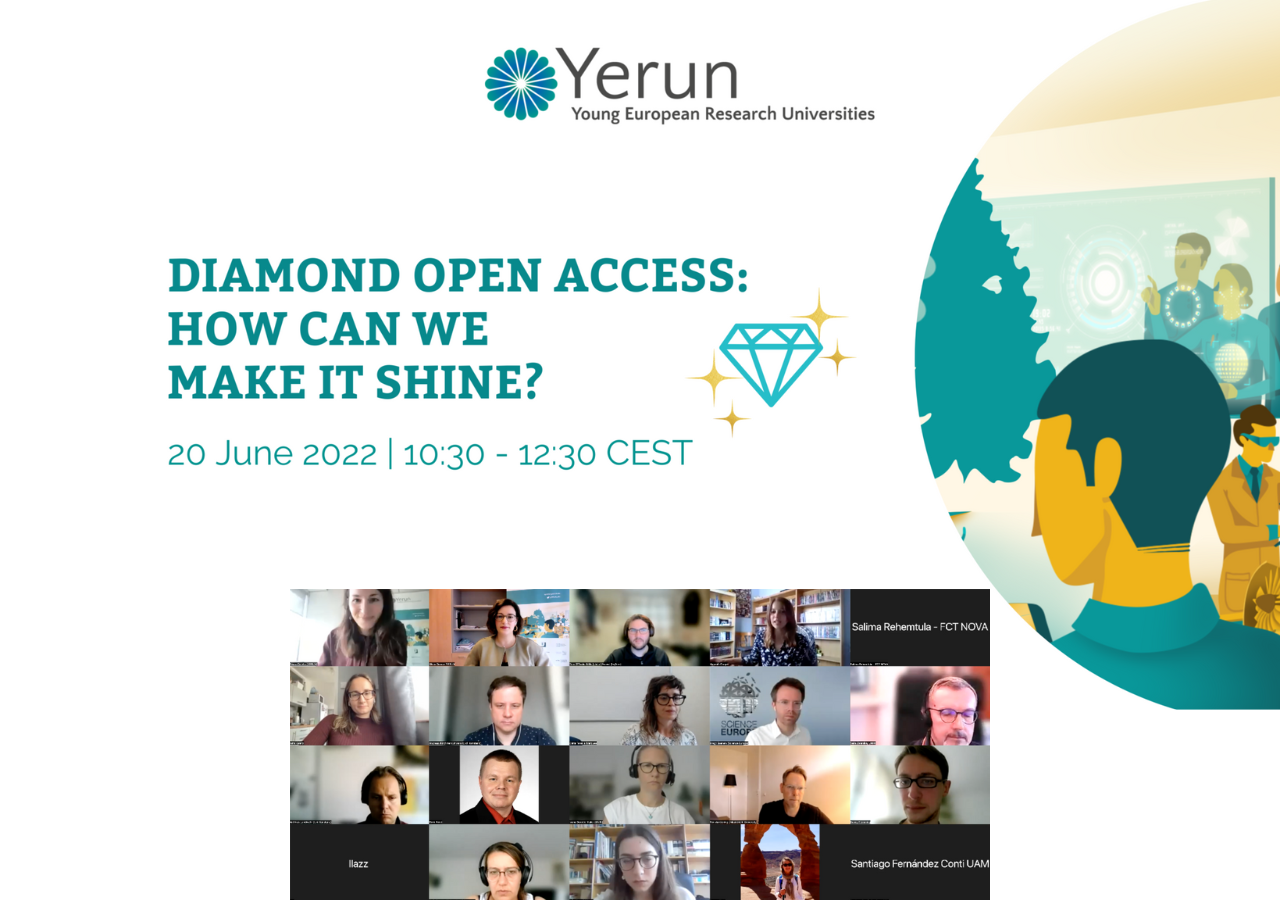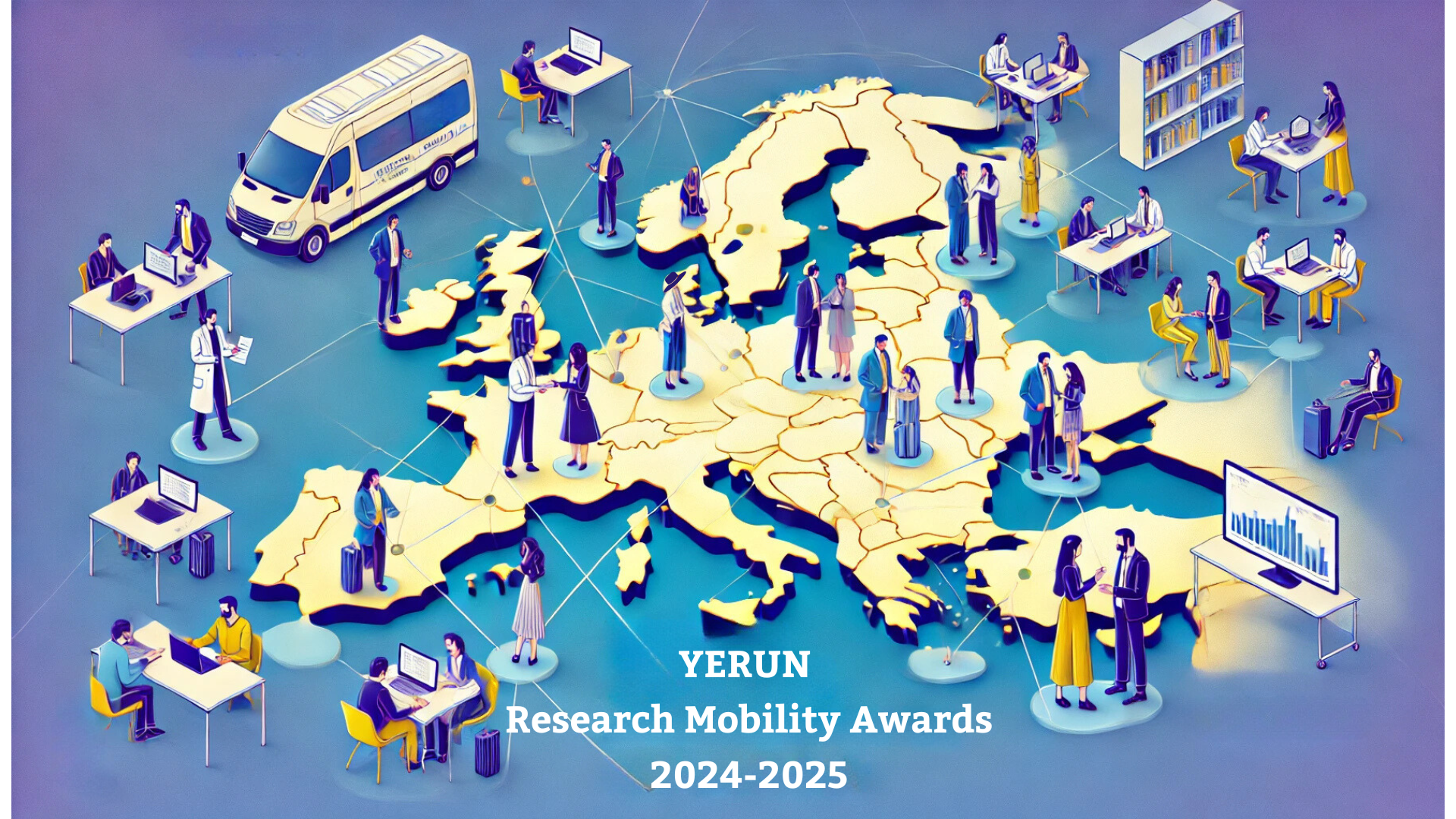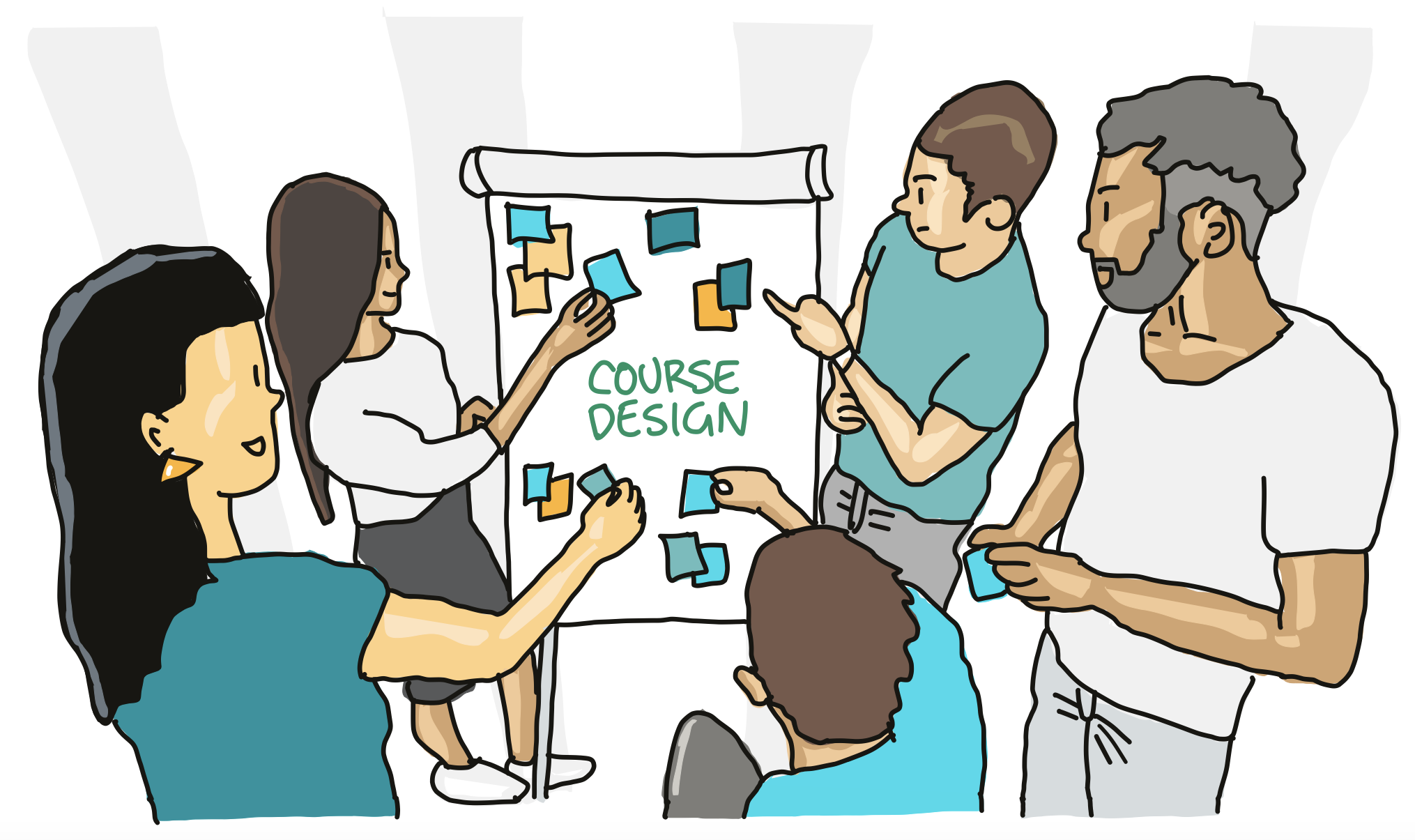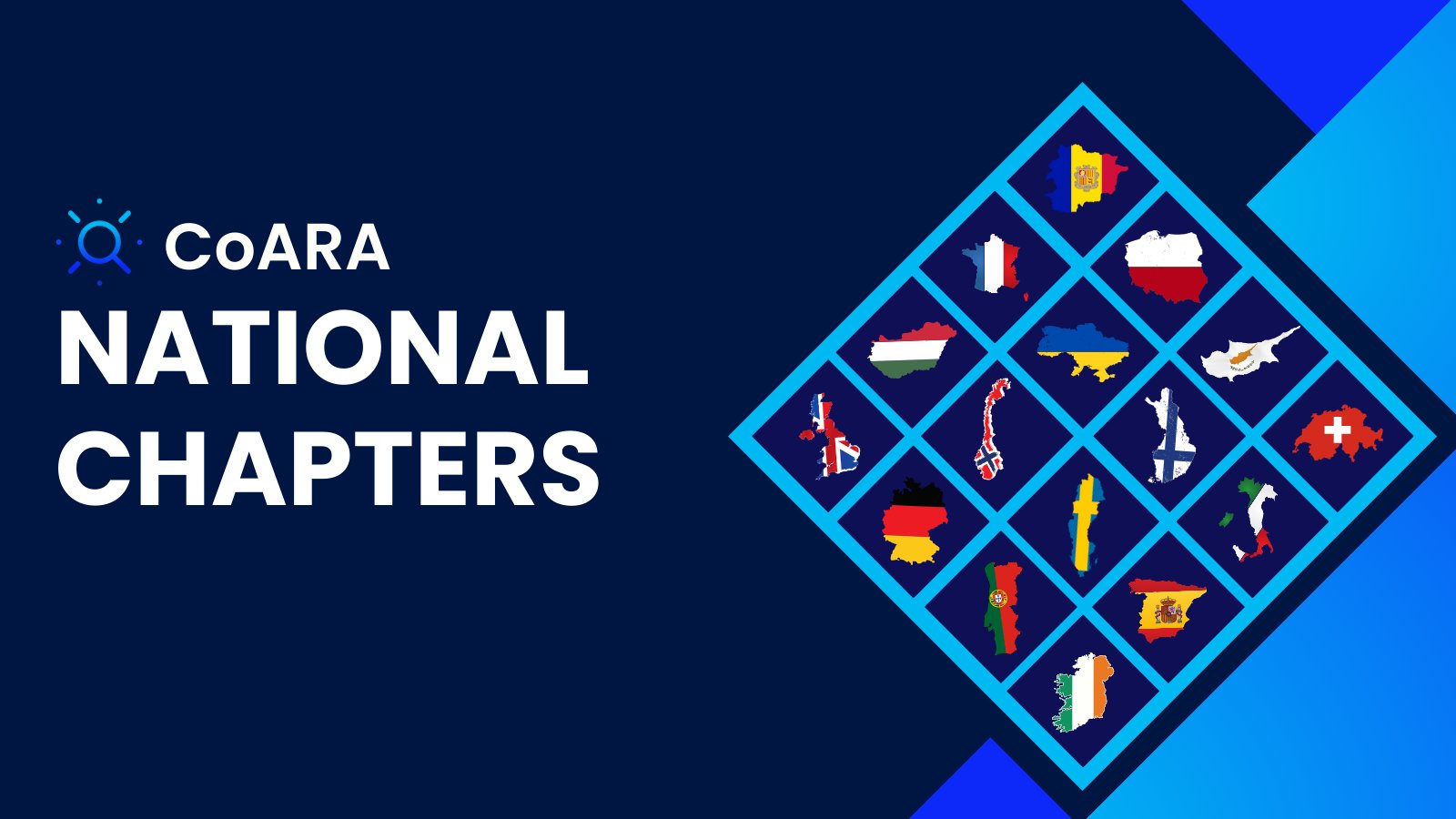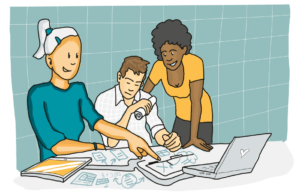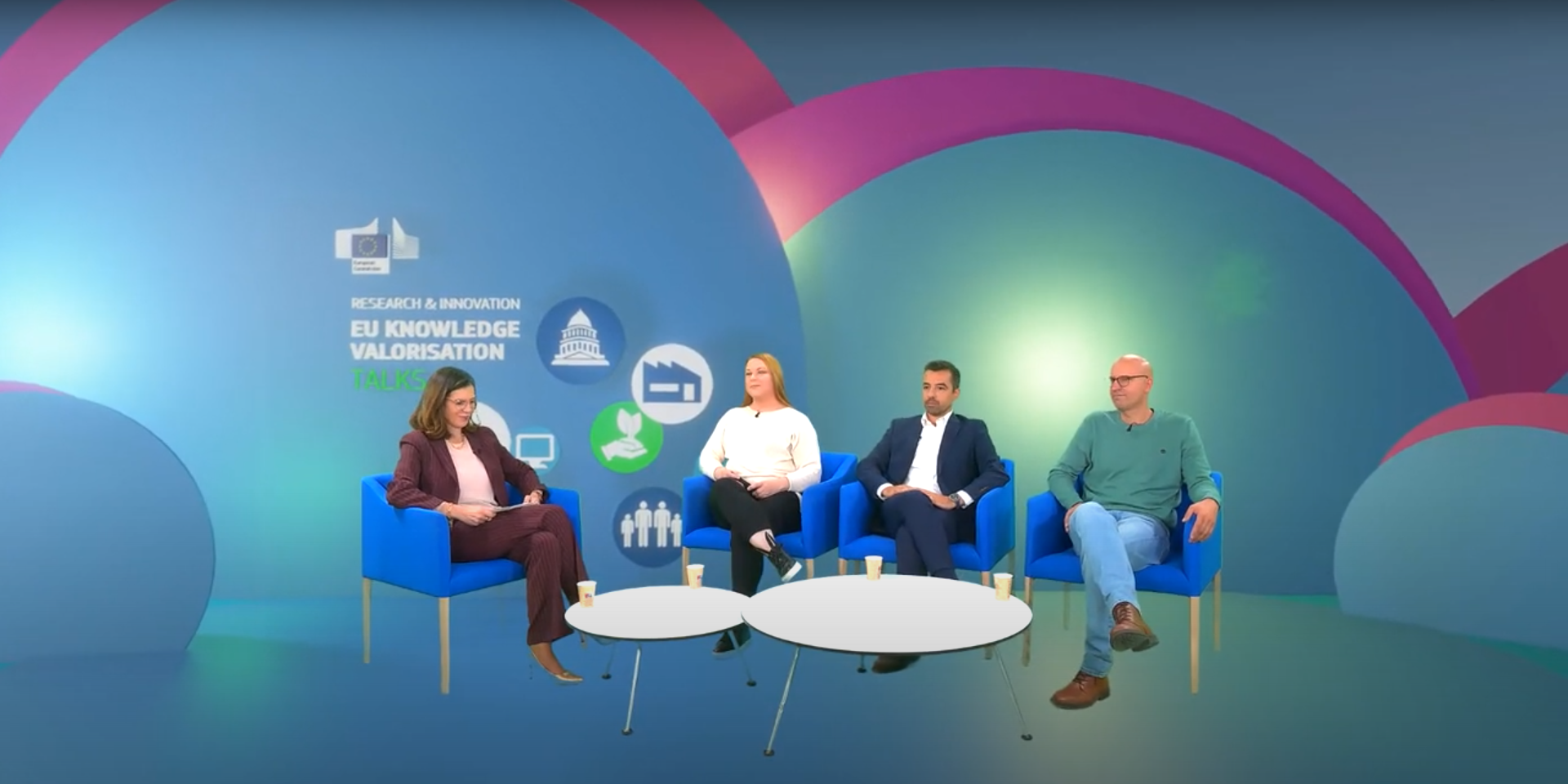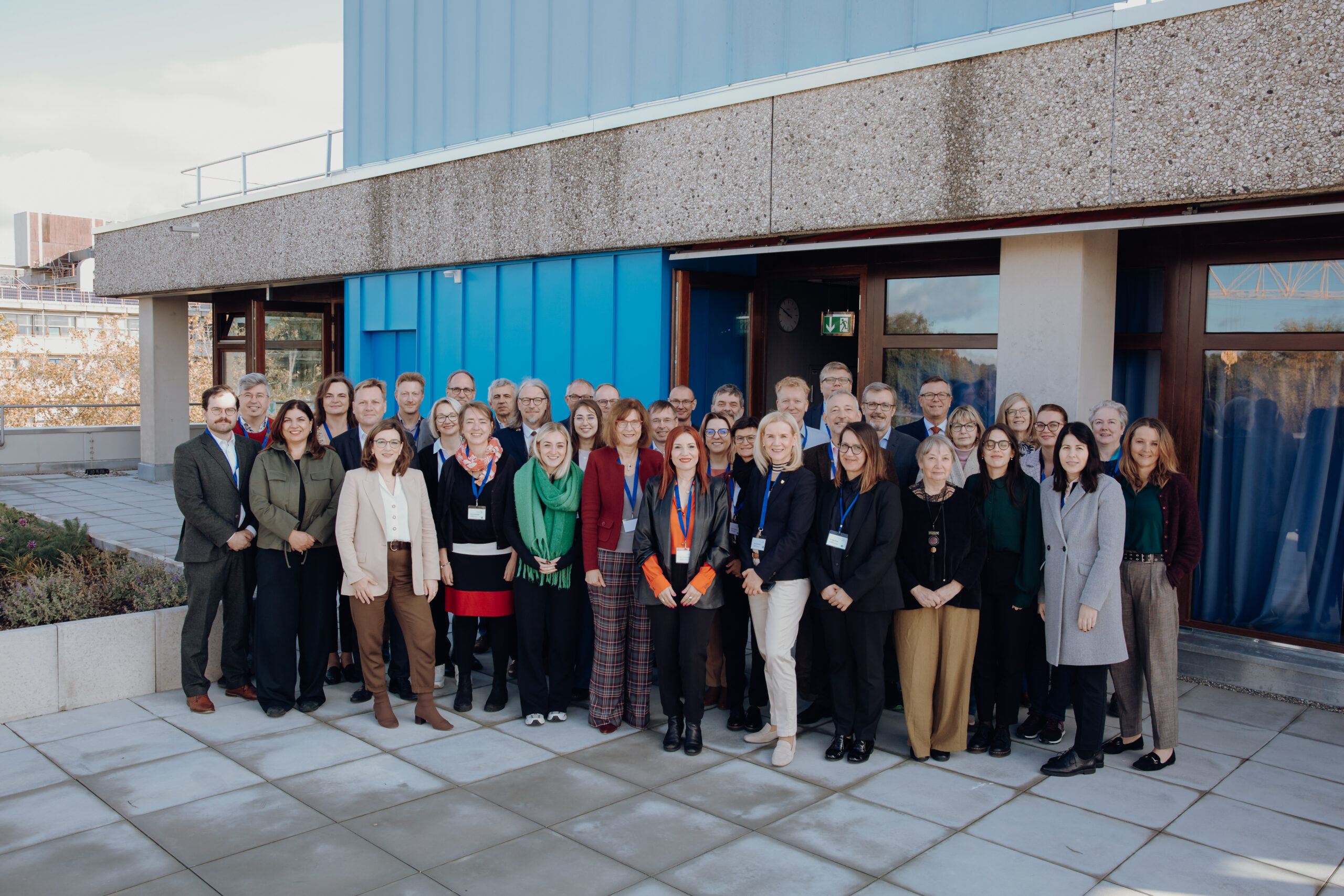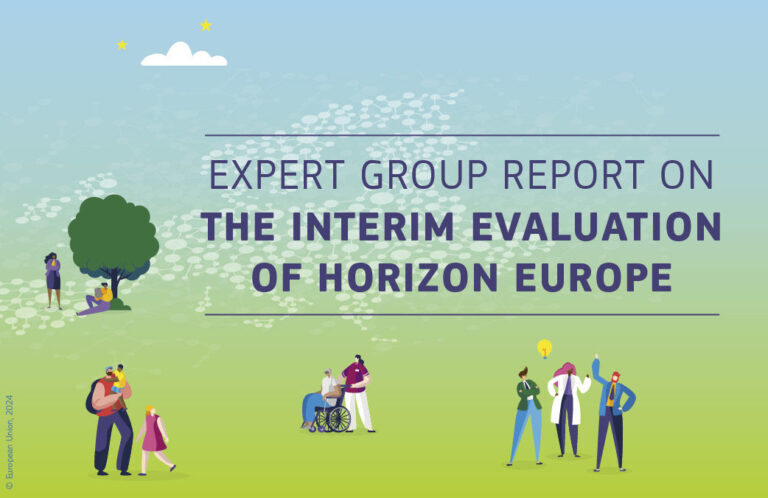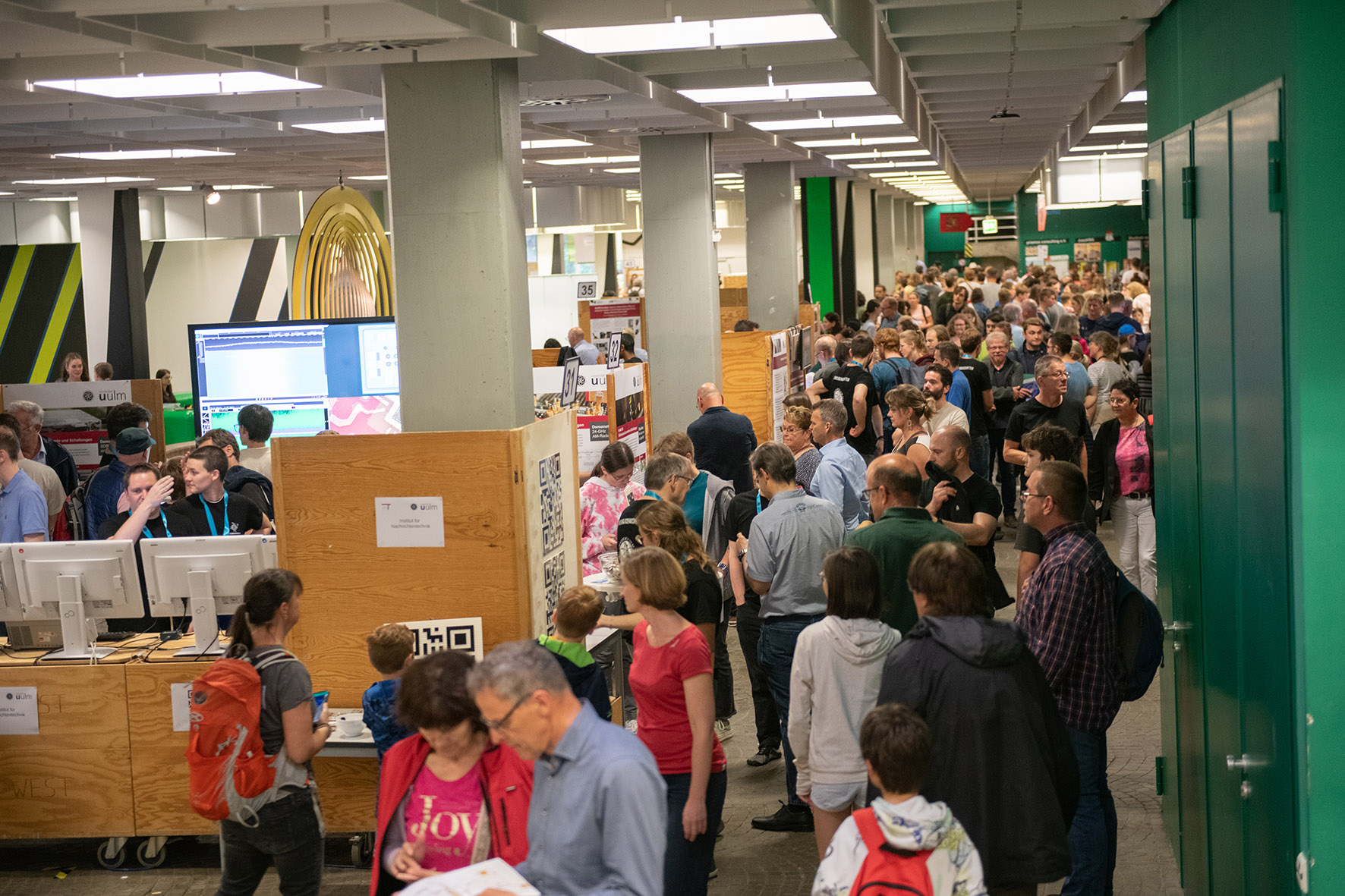On 20 June, YERUN held an online event on “Diamond Open Access: How can we make it shine?”
The event was a very positive experience, reaching the goal of stimulating a discussion among YERUN members and the wider research community on this established yet underexploited Open Access publication format. About 60 participants joined us online.
The first part of the event consisted in a series of pitches from six YERUN members. Below is a list of these pitches, with a short description from the presenters on their initiatives.
- Hannah Crago and Dafni Kalatzi Pantera, from the University of Essex, presented ‘The Essex Student Journal: engaging students in diamond open access‘. The Essex Student Journal is a multi-disciplinary diamond open access journal run by students, for students. It helps to promote the benefits of diamond open access, and introduces our undergraduate and postgraduate students to diamond open access at an early stage of their careers. In this sense, the Essex Student Journal works as an engagement tool, whilst also providing our students with a range of benefits for themselves. To access the PPT, click here.
- Matthias Landwehr and Andreas Kirchner, from the University of Konstanz, presented the ‘KOALA’ project (Establishing Consortial Open Access Solutions). In the KOALA (Konsortiale Open Access Lösungen aufbauen) project, consortial solutions for financing open access are being established. Collaborative funding of open access journals and book series by academic libraries is an alternative to the dominant APC model, where articles are paid for individually by authors or their institutions. The infrastructure created by KOALA enables fair and sustainable financing of quality-assured open access publications. It contributes to removing financial hurdles for authors and thus facilitates participation in open access publications. The project is funded by the German Federal Ministry of Education and Research (BMBF), partners are the TIB (Leibniz Information Centre for Science and Technology) and the University of Konstanz. To access the PPT, click here.
- Ivana Dorotić Malič, from the University of Rijeka, presented ‘Diamond open access at the University of Rijeka: Hrčak – portal of Croatian scientific and professional journals‘. HRČAK is the central portal of Croatian scientific, professional and popular open access (OA) journals. Hrčak offers open access to more than 500 journals, 300 of which are scientific peer reviewed publications, mostly in Croatian. Most of the journals do not ask authors to pay article processing charges (APCs). The University of Rijeka publishes 17 DOA journals on the Hrčak portal. To access the PPT, click here.
- Ron Aardening, from Maastricht University, presented ‘Diamond Open Access: initiatives to include DOA in the national Open Science agenda‘. Our collaborative strategies for the upcoming years: 1. Selected existing publishing initiatives based on central selection criteria, in line with consortium R&P deals (DOA or switching to DOA (e.g. Subscribe to Open) publishers); 2. Fund for new DOA initiatives (e.g. university presses and national initiatives); 3. DOA infrastructures (e.g. openjournals.nl journal publishing platform). To access the PPT, click here.
- Cátia Teles e Marques and Salima Rehemtula, from NOVA University of Lisbon, presented the work of the NOVA Faculties of Sciences and Technology (NOVA FCT) and of Social Sciences and Humanities (NOVA FCSH) which have been promoting DOA through the dissemination of good practices and community advocacy, capacity building and training initiatives. The presentation highlighted some of the actions aimed at their in-house publications and researchers and designed to make diamond open access shine at NOVA. To access the PPT, click here.
- Tomi Rosti, from the University of Eastern Finland, presented ‘Diamond Open Access at UEF’. Here, students send their master thesis to the departments for the review in the service portal, and after approval, the theses are transferred to the university’s own Dspace-based publishing system for publication. We have also created our own processes for dissertations and self-archived articles. All publications are openly available and the university will take care or the costs.
Following these presentations, participants were split in breakout rooms, to discuss obstacles and possible solutions to a successful implementation of Diamond Open Access. When discussing the obstacles, participants pointed out culture and funding as being the main aspects hindering DOA. Considerations related to the prestige of the journals are still very prominent in the academic community, something which is exacerbated by the fact that DOA journals are usually less easy to find, they don’t enjoy the same type of dissemination and publicity of subscription journals.
Further, it was discussed that there is a power-imbalance, with large publishers getting more involved with OA publishing, but not focusing on Diamond Open Access. This highlights the difficulty of changing culture, as many of the prestigious and well-known journals are managed by large publishers, and therefore not using the Diamond OA model. With all recent changes towards a more Open Access publishing landscape, the complexity of navigating the publishing landscape has increased. Participants reflected on this by discussing the confusion caused by the types and routes to Open Access, making it difficult to engage.
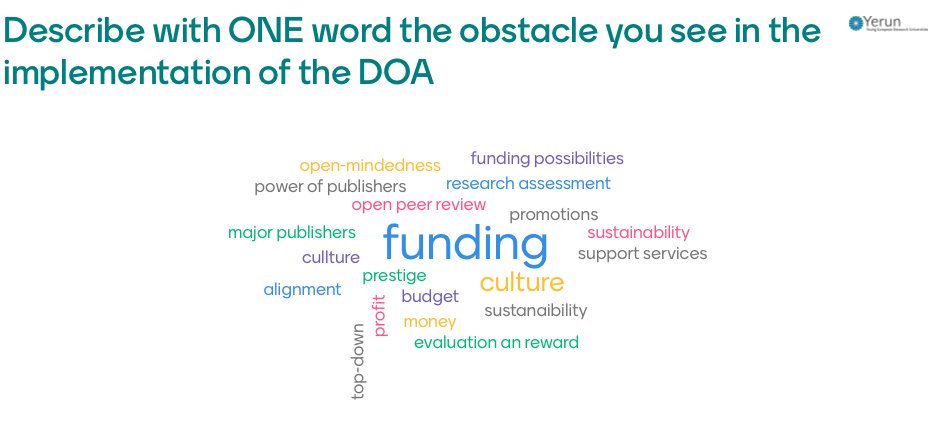
In terms of solutions, participants mentioned the following aspects:
- Using already existing guidelines (e.g. from Unesco, LIBER, EUA, the DOA Action Plan, etc) is important, as they already provide us with a route to follow to successfully implement the DOA.
- Further promoting communication and collaborative infrastructures is crucial: this can be done via communities of practice, working groups and similar fora.
- To address issues relating to funding, building consortia with other organisations to receive national funding can be a good solution.
- Seeking synergies with the ongoing developments relating to the reform of research assessment reform is paramount: this means tackling the culture around rewards and incentives and promoting new generation metrics in career development.
- In terms of visibility, it’s important that the DOA journals and databases that specifically highlight DOA journals, like DOAJ, are further promoted to increase their findability and reputation as serious, prestigious, and trusted journals.
The event was concluded by a presentation by Bregt Saenen, Senior Policy Officer at Science Europe, who provided a fantastic overview of the Diamond Open Access Action Plan launched in March by Science Europe, Operas, CoalitionS and the French National Agency of Research (ANR), which has now reached 100 endorsing institutions. Bregt Saenen stressed that the Action Plan does not aim to invent a new ecosystem, but to strengthen what is already existing and to increase the capacity of DOA journals to provide innovative, valid, reliable and accessible publishing services. This will be done by aligning and building common resources for Diamond OA, by respecting the cultural, multilingual and disciplinary diversity that constitute the strength of Diamond OA.
The Action Plan emphasises four central elements: efficiency, quality standards, capacity building and sustainability. These elements complement our event on Diamond Open Access in terms of the obstacles and solutions discussed, as the focus on the community coming together to collectively change culture and improve infrastructure will be a key focus in the coming years. We are proud of the progress made already from our partnering institutions, and welcome further collective discussion and action.
Last, we would like to highlight an important point Bregt Saenen from Science Europe made during our event: anyone can sign up to endorse the Diamond Open Access Action Plan – institution or individual. We highly recommend this, if you have not already endorsed this great initiative. Endorsing the Action Plan does not mean signing up to any financial commitment. It means joining a community that sees this Action Plan as a basis to take the discussion around Diamond OA forward. The Action Plan will be initially taken forward by the HorizonEurope DIAMAS project, with the ultimate objective that the DOA community takes forward its implementation. Bregt Saenen reminded participant about the upcoming Diamond Open Access Conference which will take place on 19-20 September in Zadar, Croatia.
The presentation can be found here.
Have you missed the event? No worries! You can still watch the recording via this link.
Many thanks to those who participated in the event and we look forward to seeing you future YERUN events and/or activities!

